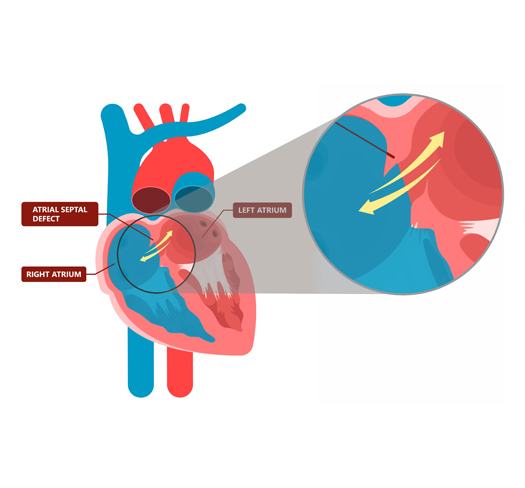-
Products
-
- Featured Products
- Supraflex Cruz
-
- Professionals
- Patients & Caregivers
- Investors
- About SMT
Main navigation
What are the symptoms?
Symptoms may or may not occur, depending on the size of the defect. If the ASD is small, there may be no symptoms. An ASD may even go undetected until adulthood. However, if the ASD is large there may be symptoms that can be detected early. If a large ASD is left untreated, there may be permanent damage to the heart as well as the lungs. It is therefore important to treat a large ASD at the right time. The symptoms that may occur during childhood or adulthood include:
- Frequent infections
- Slow growth
- Loss of weight
- Difficulty breathing
- Fatigue
- Bluish colour of skin, lips, fingernails/toenails

It is normal for a growing foetus to have an opening or hole between the right atrium and left atrium whilst in the mother’s womb. This hole allows blood to flow without going through the lungs. However, after birth, the lungs start working and this hole is no longer needed, so it closes on its own. However, if this hole does not close, it is referred to as an ASD. It is common for infants with an ASD to have other heart problems along with an ASD.
- Physical examination
- Electrocardiogram (ECG/EKG)
- Chest X-ray
- Echocardiography
- Medicine
- Surgery
- Transcatheter device closure


